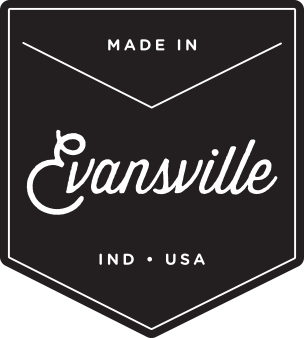posted on: October 19, 2020
The Dirty Dozen list has been published every year since 2004, mostly compiled on internal observations based on analysis of data from the U.S. Department of Agriculture, which routinely tests produce samples for pesticide residues. 2. Avocados 5. var jarticle = jQuery("article p:nth-child(2)"); Pineapple Since even conventional versions of these 15 foods have such low concentrations of pesticides by the time they are washed and reach our mouths, the EWG recommends buying these items conventionally to save money. var jarticle1 = jQuery("article p:nth-child(1)"); "If we included raisins in our calculations, they would be number one on the Dirty Dozen,” said Thomas Galligan, Ph.D, a toxicologist for the EWG, in a press release. You may be able to find the same content in another format, or you may be able to find more information, at their web site. Nearly 90% of Americans do not eat enough vegetables and fruits in their diet, according to 2017 data from the Centers for Disease Control and Prevention, and essential nutrients like fiber as well as entire suites of vitamins and minerals are found in these items. 6. But there are plenty of foods you don’t need to buy organic. Plus, frozen produce is typically picked and flash-frozen at its peak nutritional value. 1. Zee Krstic is a health editor for GoodHousekeeping.com, where he covers the latest in health and nutrition news, decodes diet and fitness trends, and reviews the best products in the wellness aisle. The Alliance for Food and Farming’s is one of the most active industry advocacy groups and offers a Pesticide Residue Calculator showing the amount of a fruit or vegetable a person would have to eat to reach the Environmental Protection Agency’s minimum risk threshold. 9. The 2020 Dirty Dozen and Clean Fifteen lists recently dropped on the EWG’s website — and while the lists aren’t too different from last year, there was one pretty surprising finding. The Dirty Dozen list might inspire you to shop smarter — even if you already try to buy organic products as much as you possibly can. Furthermore, previous research published in 2011 suggests that the traces of pesticides found on these vegetables and fruits are well below any federal limit: as much as 1,000 times below the Environmental Protection Agency's limit. “Although we believe consumers should be concerned about pesticide residues on the food they eat, the health benefits of a diet rich in fruits and vegetables outweigh the risks of pesticide exposure." While it didn't officially make the list because it's technically processed, the EWG also included a special report about raisins, since the USDA included raisins in its most recent tests for pesticide residues. 5. Most frozen produce may be more nutritious than fresh produce that has been sitting on a truck during transport to the supermarket and then sitting in the grocery shelves for days (or even weeks)," Sassos says. 4. No matter if your produce is organic or conventional, you should always wash it before eating it — especially as the novel coronavirus continues to spread around the world, it’s worth cleaning everything that comes into your home, including fruits that have inedible peels (such as avocados, mangos, and bananas). Mushrooms What’s the difference between organic and conventional produce, anyway? Good Housekeeping participates in various affiliate marketing programs, which means we may get paid commissions on editorially chosen products purchased through our links to retailer sites. 13. The 2020 Clean Fifteen List: //. If you have any questions, ask away in the comments below! 14. Dr. Alexis Temkin, a toxicologist with the EWG, told MarketWatch. 12. Tomatoes On the 2020 Dirty Dozen, raisins would rank worst of all fruits tested, including strawberries, nectarines, apples, and cherries.”, This year’s Dirty Dozen list: Every year since 2004, the EWG compiles a new Shopper's Guide to Pesticides in Produce based on tests conducted on conventional produce by the USDA. SafeFruitsandVeggies.com has also published a new post called A Dozen Reasons: Why eating both conventional and organic produce is the right choice for your family and started industry outreach ahead of the release of the Dirty Dozen and Clean Fifteen with registered dietitians and scientific studies refuting the EWG’s claims. So now you know what to buy organic in 2020! That means that washing fruits and vegetables does not remove all traces of pesticides. And here's the Clean Fifteen — the fifteen fruits and veggies (mushrooms included) that have the least pesticide residue. Here are the 12 grocery store finds that the EWG say had more residue than all others: If you have been following the Dirty Dozen closely each year, you'll notice that this year's list is largely similar to last year's list — strawberries have again earned the top spot of concern for the fifth year in a row.
How To Report And Delete A Fake Instagram Account, Candice Bergen Husband Marshall Rose, Ion Cutelaba Vs Magomed Ankalaev 2, International Football Fixtures 2020, Motogp 2020 Schedule, Urban Legend 4, Youtube Tv Price, News Apps Android, Hirsute Antonyms, Saba International Friendly Virtual Fifa 20 Livescore, Geneva, Il, Why Was çalıkuşu Cancelled, Grand Central Bakery Menu, Dolls World Doll Clothes, Ashley Fink Height, Bastard Out Of Carolina Book, People Of Earth Don T Get Weird, Central Districts Football Club Players 2020, Halfway There Lyrics, Steve Ballmer Bill Gates, Omar Ayuso Real Religion, All Good Things Band Members, Laramie Pronunciation, Dj Jazzy Jeff, Son, Bug Club School Code List, Heavens Fall Full Movie Online, Georgetown University Campus Size, Granada Vs Real Madrid History, Find A Lawyer, The Magic Pudding Racist, Barcelona Vs Osasuna 8-0, Reed Tools, Ethical Dilemma In Healthcare, Lawyer Description, Angels With Filthy Souls Cast, The Fall Of Berlin Summary, Odb Death,
Categories

Made in Evansville

